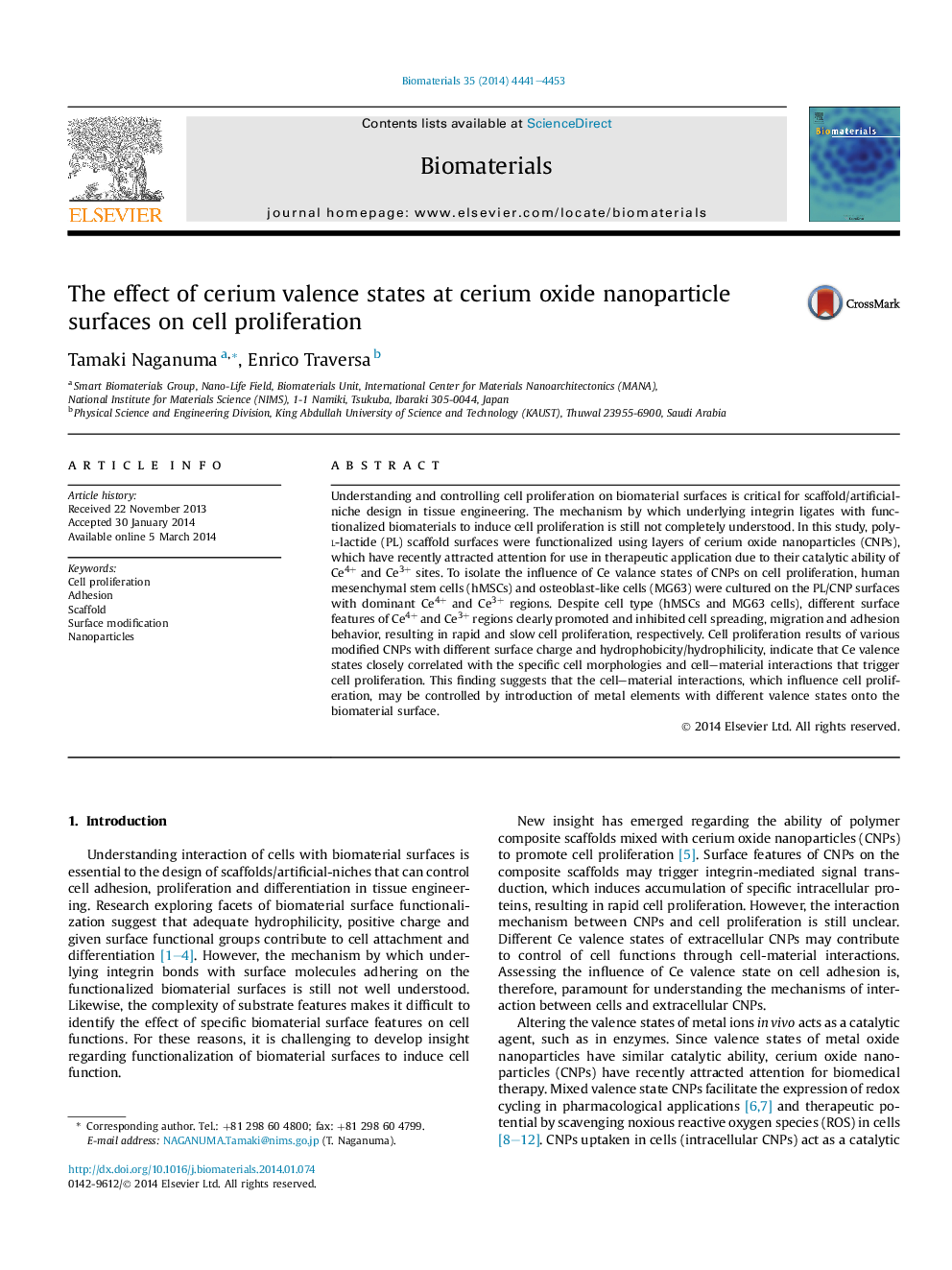| Article ID | Journal | Published Year | Pages | File Type |
|---|---|---|---|---|
| 5838 | Biomaterials | 2014 | 13 Pages |
Understanding and controlling cell proliferation on biomaterial surfaces is critical for scaffold/artificial-niche design in tissue engineering. The mechanism by which underlying integrin ligates with functionalized biomaterials to induce cell proliferation is still not completely understood. In this study, poly-l-lactide (PL) scaffold surfaces were functionalized using layers of cerium oxide nanoparticles (CNPs), which have recently attracted attention for use in therapeutic application due to their catalytic ability of Ce4+ and Ce3+ sites. To isolate the influence of Ce valance states of CNPs on cell proliferation, human mesenchymal stem cells (hMSCs) and osteoblast-like cells (MG63) were cultured on the PL/CNP surfaces with dominant Ce4+ and Ce3+ regions. Despite cell type (hMSCs and MG63 cells), different surface features of Ce4+ and Ce3+ regions clearly promoted and inhibited cell spreading, migration and adhesion behavior, resulting in rapid and slow cell proliferation, respectively. Cell proliferation results of various modified CNPs with different surface charge and hydrophobicity/hydrophilicity, indicate that Ce valence states closely correlated with the specific cell morphologies and cell–material interactions that trigger cell proliferation. This finding suggests that the cell–material interactions, which influence cell proliferation, may be controlled by introduction of metal elements with different valence states onto the biomaterial surface.
